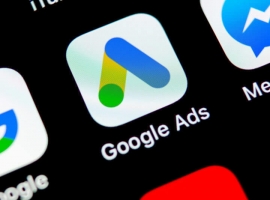Photo © Bloomicon / Shutterstock.com
Brand safety has been an issue since the beginning of the internet. However in the past several years it has gained more importance and urgency, with incidents and advertiser concerns growing.
A new study from brand safety platform CHEQ, media agency IPG Mediabrands and automaker BMW aimed to quantify the risk to brands that appear next to “unsafe” content. In short, the study found being associated with unsafe content had a significant, negative impact on brand perceptions, consumer trust and intent to buy.
Not just a survey. The study’s methodology makes makes its findings more credible than if were simply the product an abstract survey of consumer sentiment. There was an initial screening survey, then participants were exposed to ads beside negative or unsafe content. Then there was a follow-up survey to measure brand sentiment:
The full process is described as follows: “We displayed 4 different types of content alongside the ads ranging from safe to generally unsafe, brand averse and vertical averse . . . We displayed BMW and Hulu brand video ads to the test group, while the control group was shown various PSA ads. . . We displayed the content on both desktop and mobile to make sure we captured and reflected consumers’ genuine ad viewing experience.”
Consumer sentiment declines across the board. The results confirm brand marketers’ fears. Below are some of the summary findings:
- Consumer perception of brand quality declines by 7X vs. the control group not exposed to the unsafe content
- There’s a 2X decline in purchase intent for those exposed
- Consumers are 50 percent less likely to recommend the brand
- Consumers are 2.8X less interested in associating themselves with the brand
- Consumers are 3X more likely to believe that the brand isn’t “in the know”
There are additional findings in the report, consistent with these negative perceptions and sentiment. For example, many of the study participants assumed the placement of the brand ads near negative or unsafe content was intentional. They also view these ads as an “endorsement” of the unsafe content.
Perhaps more troubling for advertisers is the finding that “content that clashes with the brand,” but isn’t inherently offensive or unsafe (e.g., the two lower examples in the graphic above) still causes problems. Measures of brand empathy, reputation, quality and trust all suffered in those circumstances as well.
Why it matters to brands. While platform algorithms and AI technology can screen for certain types of unsafe content — to minimize (but probably not eliminate) negative or unsafe placements — it’s much more challenging to control for the latter scenario: otherwise safe content that “clashes with the brand.” This appears to be a far more nuanced problem that machines alone probably cannot solve.
As the report ominously concludes, “Once the consumer has viewed ads alongside unsafe content, the damage to the brand is already done.”
The post Study confirms brands’ worst fears about unsafe content appeared first on Marketing Land.
Original article source: https://marketingland.com/feed






There are no comments